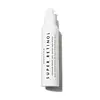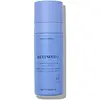What's inside
What's inside
 Key Ingredients
Key Ingredients

 Benefits
Benefits

 Concerns
Concerns

 Ingredients Side-by-side
Ingredients Side-by-side

Water
Skin ConditioningDimethicone
EmollientGlycerin
HumectantButylene Glycol
HumectantDipentaerythrityl Hexacaprylate/Hexacaprate
EmulsifyingDimethicone/Vinyl Dimethicone Crosspolymer
Skin ConditioningHydroxyethyl Acrylate/Sodium Acryloyldimethyl Taurate Copolymer
Emulsion StabilisingGlycine Soja Oil
EmollientLauroyl Lysine
Skin ConditioningPEG-8
HumectantPhenoxyethanol
PreservativeSqualane
EmollientGlycine Soja Seed Extract
Skin ConditioningPolysorbate 60
EmulsifyingAcrylates/C10-30 Alkyl Acrylate Crosspolymer
Emulsion StabilisingCaprylyl Glycol
EmollientPolyurethane Crosspolymer-1
Chlorphenesin
AntimicrobialPolysorbate 20
EmulsifyingSodium Hydroxide
BufferingDisodium EDTA
Lactic Acid
BufferingRetinol
Skin ConditioningOlive Glycerides
EmulsifyingSorbitan Isostearate
EmulsifyingCeramide NP
Skin ConditioningSodium Hyaluronate
HumectantPhenethyl Alcohol
MaskingGlyceryl Caprylate
EmollientPhenylpropanol
MaskingOpuntia Ficus-Indica Stem Extract
Skin ConditioningOpuntia Ficus-Indica Callus Culture Extract
AntioxidantWater, Dimethicone, Glycerin, Butylene Glycol, Dipentaerythrityl Hexacaprylate/Hexacaprate, Dimethicone/Vinyl Dimethicone Crosspolymer, Hydroxyethyl Acrylate/Sodium Acryloyldimethyl Taurate Copolymer, Glycine Soja Oil, Lauroyl Lysine, PEG-8, Phenoxyethanol, Squalane, Glycine Soja Seed Extract, Polysorbate 60, Acrylates/C10-30 Alkyl Acrylate Crosspolymer, Caprylyl Glycol, Polyurethane Crosspolymer-1, Chlorphenesin, Polysorbate 20, Sodium Hydroxide, Disodium EDTA, Lactic Acid, Retinol, Olive Glycerides, Sorbitan Isostearate, Ceramide NP, Sodium Hyaluronate, Phenethyl Alcohol, Glyceryl Caprylate, Phenylpropanol, Opuntia Ficus-Indica Stem Extract, Opuntia Ficus-Indica Callus Culture Extract
Water
Skin ConditioningIsononyl Isononanoate
EmollientDiisopropyl Dimer Dilinoleate
EmollientGlycerin
HumectantSqualane
EmollientDimethicone
EmollientCaprylic/Capric Triglyceride
MaskingEthylhexyl Isononanoate
EmollientDimethyl Isosorbide
SolventPotassium Cetyl Phosphate
EmulsifyingBakuchiol
AntimicrobialCetyl Alcohol
EmollientGlycine Soja Extract
Skin ConditioningHydroxyethyl Acrylate/Sodium Acryloyldimethyl Taurate Copolymer
Emulsion StabilisingBenzyl Alcohol
PerfumingHydroxypinacolone Retinoate
Skin ConditioningAstrocaryum Murumuru Seed Butter
EmollientGossypium Herbaceum Seed Oil
Skin ConditioningPolymethylsilsesquioxane
Glyceryl Stearate
EmollientPolysilicone-11
Hdi/Trimethylol Hexyllactone Crosspolymer
Bidens Pilosa Extract
HumectantPolyisobutene
Butyrospermum Parkii Butter
Skin ConditioningWithania Somnifera Root Extract
Skin ConditioningTrisodium Ethylenediamine Disuccinate
Helianthus Annuus Seed Oil
EmollientHordeum Vulgare Extract
EmollientZingiber Officinale Root Extract
MaskingCucumis Sativus Seed Extract
Skin ConditioningTocopheryl Acetate
AntioxidantTocopherol
AntioxidantLinum Usitatissimum Seed Oil
PerfumingBisabolol
MaskingCaprylhydroxamic Acid
Xanthan Gum
EmulsifyingPhytosterols
Skin ConditioningCitric Acid
BufferingPEG-7 Trimethylolpropane Coconut Ether
EmulsifyingSorbitan Isostearate
EmulsifyingPhenethyl Alcohol
MaskingWater, Isononyl Isononanoate, Diisopropyl Dimer Dilinoleate, Glycerin, Squalane, Dimethicone, Caprylic/Capric Triglyceride, Ethylhexyl Isononanoate, Dimethyl Isosorbide, Potassium Cetyl Phosphate, Bakuchiol, Cetyl Alcohol, Glycine Soja Extract, Hydroxyethyl Acrylate/Sodium Acryloyldimethyl Taurate Copolymer, Benzyl Alcohol, Hydroxypinacolone Retinoate, Astrocaryum Murumuru Seed Butter, Gossypium Herbaceum Seed Oil, Polymethylsilsesquioxane, Glyceryl Stearate, Polysilicone-11, Hdi/Trimethylol Hexyllactone Crosspolymer, Bidens Pilosa Extract, Polyisobutene, Butyrospermum Parkii Butter, Withania Somnifera Root Extract, Trisodium Ethylenediamine Disuccinate, Helianthus Annuus Seed Oil, Hordeum Vulgare Extract, Zingiber Officinale Root Extract, Cucumis Sativus Seed Extract, Tocopheryl Acetate, Tocopherol, Linum Usitatissimum Seed Oil, Bisabolol, Caprylhydroxamic Acid, Xanthan Gum, Phytosterols, Citric Acid, PEG-7 Trimethylolpropane Coconut Ether, Sorbitan Isostearate, Phenethyl Alcohol
Ingredients Explained
These ingredients are found in both products.
Ingredients higher up in an ingredient list are typically present in a larger amount.
Dimethicone is a type of synthetic silicone created from natural materials such as quartz.
What it does:
Dimethicone comes in different viscosities:
Depending on the viscosity, dimethicone has different properties.
Ingredients lists don't always show which type is used, so we recommend reaching out to the brand if you have questions about the viscosity.
This ingredient is unlikely to cause irritation because it does not get absorbed into skin. However, people with silicone allergies should be careful about using this ingredient.
Note: Dimethicone may contribute to pilling. This is because it is not oil or water soluble, so pilling may occur when layered with products. When mixed with heavy oils in a formula, the outcome is also quite greasy.
Learn more about DimethiconeGlycerin is already naturally found in your skin. It helps moisturize and protect your skin.
A study from 2016 found glycerin to be more effective as a humectant than AHAs and hyaluronic acid.
As a humectant, it helps the skin stay hydrated by pulling moisture to your skin. The low molecular weight of glycerin allows it to pull moisture into the deeper layers of your skin.
Hydrated skin improves your skin barrier; Your skin barrier helps protect against irritants and bacteria.
Glycerin has also been found to have antimicrobial and antiviral properties. Due to these properties, glycerin is often used in wound and burn treatments.
In cosmetics, glycerin is usually derived from plants such as soybean or palm. However, it can also be sourced from animals, such as tallow or animal fat.
This ingredient is organic, colorless, odorless, and non-toxic.
Glycerin is the name for this ingredient in American English. British English uses Glycerol/Glycerine.
Learn more about GlycerinThis is a synthetic polymer. It helps improve the texture of products by adding thickness and gel-like feel.
It is also an emulsifer, meaning it prevents ingredients such as oil and water from separating. It also helps evenly disperse other ingredients.
Phenethyl Alcohol is a colorless and aromatic alohol. It is naturally occuring in essential oils.
The scent of this ingredient is floral and often compared to rose.
Like other alcohols, this ingredient helps prevent the growth of bacteria. However, its main purpose is to impact a fragrance.
Learn more about Phenethyl AlcoholSorbitan Isostearate is an emulsifer and cleaning agent. It is created from isostearic acid and sorbitol.
As an emulsifier, Sorbitan Isostearate prevents oils and water from separating.
Due to its isostearic acid base, it may not be safe for Malassezia or fungal acne.
Learn more about Sorbitan IsostearateSqualane is an emollient that helps the skin hold onto moisture. It's an oily liquid that occurs naturally in certain types of fish and plant oils.
Because squalane boosts hydration in the skin, it also comes with plenty of benefits: it is an antioxidant and can help fight free radicals and skin damage. Squalane is also found to have a detoxifying effect when applied.
Squalane comes from squalene, which occurs naturally within the sebum of our skin. It is one of the oils our skin produces to keep itself hydrated. Squalane is the hydrogenated version of squalene and has a longer shelf life.
Research shows that squalane is non-irritating (even at 100% concentration).
In general, it's a fantastic ingredient. It does a great job at hydrating the skin, and it's suitable for those with sensitive skin.
The source of squalane may impact malassezia / fungal acne. This is because olive oil derived squalane can contain impurities such as fatty acids and plant waxes. Sugarcane derived squalane is recommended for anyone with malassezia concerns.
Is squalane vegan?
This depends on the source. Squalane can be derived from both plants and animals. Most squalane used in skincare comes from plants.
Please note: the source of squalane is only known if disclosed by the brand. We recommend reaching out to the brand if you have any questions about their squalane.
Read more about squalene with an "e".
Is squalane an oil?
Squalane is often called an oil, but it’s technically not; it’s a hydrocarbon, meaning it’s only made of carbon and hydrogen, unlike true oils which are triglycerides made of fatty acids and glycerol.
The term “oil-free” isn’t regulated, so companies can define it however they want. Some exclude all oils, while others just avoid mineral oil or comedogenic oils.
While some people avoid oils thinking they cause breakouts, the right kind of oil (or oil-like ingredient like squalane) can actually help balance and hydrate your skin. It’s worth testing out simple oils or squalane to see what works best for your skin.
Learn more about SqualaneWater. It's the most common cosmetic ingredient of all. You'll usually see it at the top of ingredient lists, meaning that it makes up the largest part of the product.
So why is it so popular? Water most often acts as a solvent - this means that it helps dissolve other ingredients into the formulation.
You'll also recognize water as that liquid we all need to stay alive. If you see this, drink a glass of water. Stay hydrated!
Learn more about Water